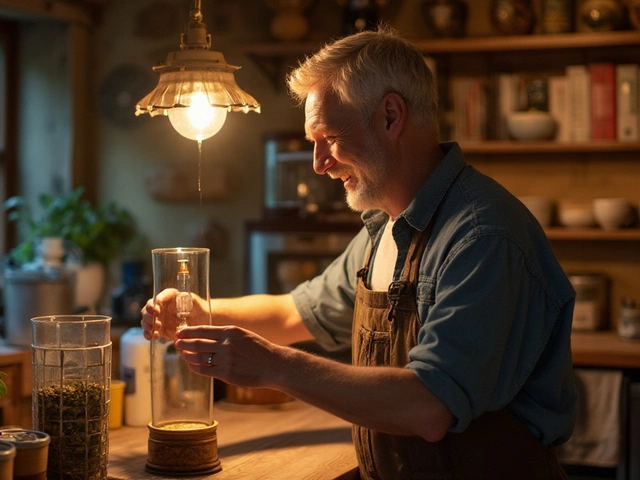Tea Sommelier Essentials: How to Taste, Pair, and Impress
If you’ve ever called yourself a tea lover, you’ve probably wondered what makes a real tea sommelier tick. It’s not just about steeping a bag and sipping. It’s about knowing leaf origins, spotting subtle flavors, and serving tea like a pro. Below you’ll find straight‑to‑the‑point advice that you can use right now, whether you’re planning a tea tasting at home or just want to sound smarter at work.
Steep Like a Pro: Quick Tasting Tips
First thing’s first: the water. Use fresh, filtered water heated to the right temperature for the tea type – 175°F for green, 200°F for black, and 212°F for herbal. Too hot, and you’ll scorch the leaves; too cool, and you miss the flavor. When you pour, let the tea bloom for a few seconds before filling the cup. This releases aromatic oils and gives you a cleaner cup.
Now, the sip. Bring the cup to your nose, inhale gently, and note the first aroma. Is it grassy, floral, or nutty? Take a small sip, let it roll across your tongue, and identify the primary taste (sweet, bitter, umami). Finish with the aftertaste – does it linger or fade quickly? Jot these notes down; a simple spreadsheet works better than a fancy notebook.
Food Pairings That Wow
Pairing food with tea is where many novices stumble. The rule of thumb is to match intensity: light teas go with delicate bites, bold teas with richer foods. For a classic green tea, try a cucumber sandwich or a slice of smoked salmon – the fresh flavors complement the tea’s vegetal notes. Black tea loves sweet, buttery treats – think shortbread or dark chocolate. If you’re serving a robust oolong, pair it with roasted nuts or a mild cheese like chèvre.
One article on this site, “What to Serve at a Tea Tasting,” breaks down exact snack ideas for each tea style, so you can pull that list for your next gathering. Remember, the goal is harmony, not competition. If the food overpowers the tea, the tasting loses its purpose.
Bonus tip: a quick palate cleanser between pours – a bite of plain toast or a sip of water – keeps your senses sharp, especially when you move from a light white tea to a smoky pu‑erh.
Beyond tasting and pairing, a tea sommelier should know a few fun facts to impress friends. Did you know it’s safe to drink a ten‑year‑old tea if it’s been stored in a cool, dark place? Our “Is It Safe to Drink 10‑Year‑Old Tea?” article explains the science and gives storage advice so you can avoid a sour surprise.
Finally, embrace the community. Share your tasting notes on socials, join a local tea club, or read more on our tag page for fresh ideas. Whether you’re curious about tea slang (yes, “teaphile” is a thing) or looking for the perfect tea‑first snack, the resources here have you covered.
So grab your favorite teapot, set the temperature, and start tasting like a true tea sommelier. Your palate will thank you, and your guests will be wowed.
The concept of a tea sommelier may sound unfamiliar to some, but it is an esteemed profession dedicated to mastering the world of tea. These experts possess an in-depth understanding of various tea types and flavors, often providing guidance in the selection and pairing of teas. Embark on a journey to explore what it means to be a tea sommelier, discovering their skills, training, and the unique knowledge required to excel in this field. Whether you're a tea enthusiast or a casual drinker, understanding the expertise of a tea sommelier can enhance your appreciation for this ancient beverage.
View Details

